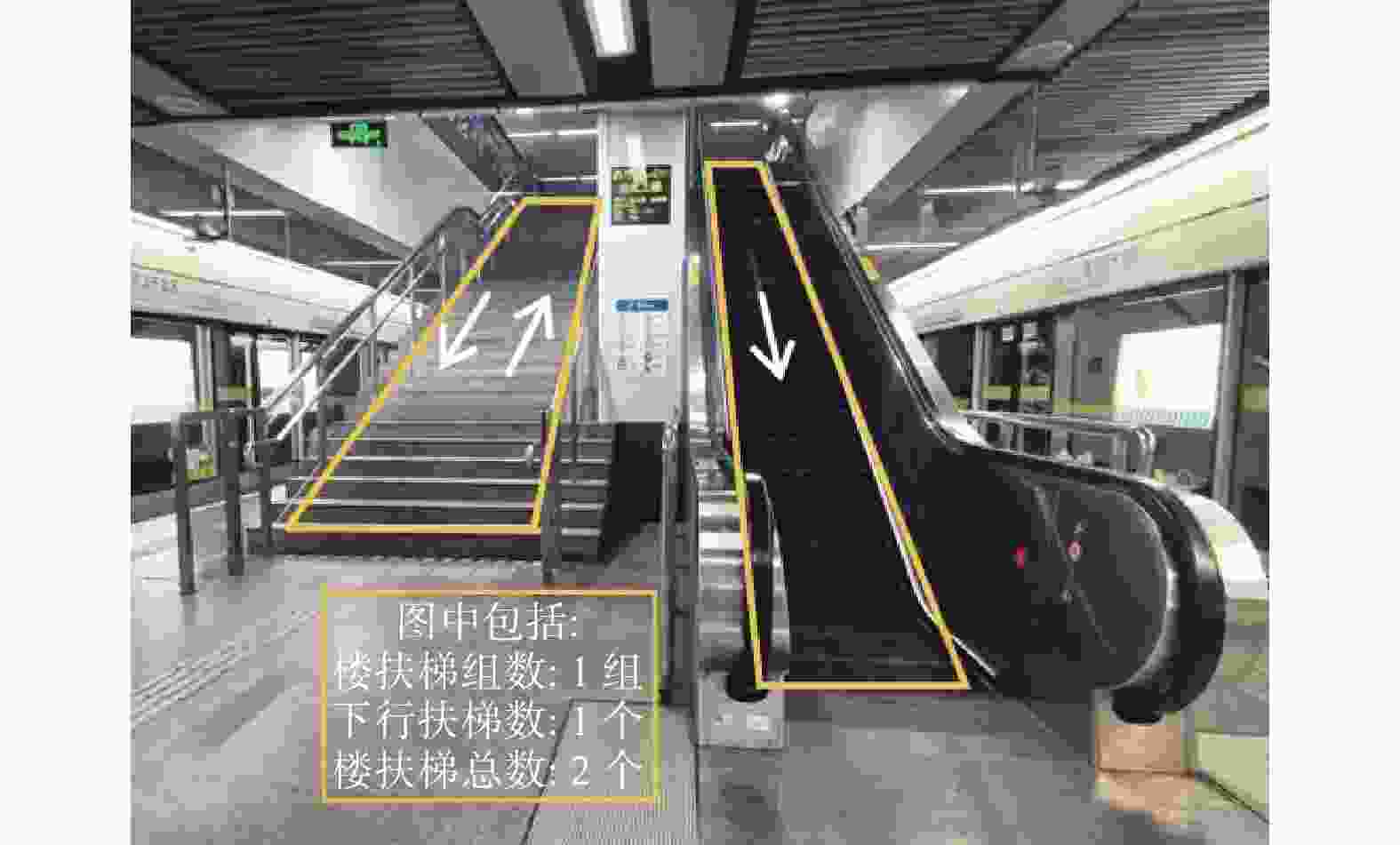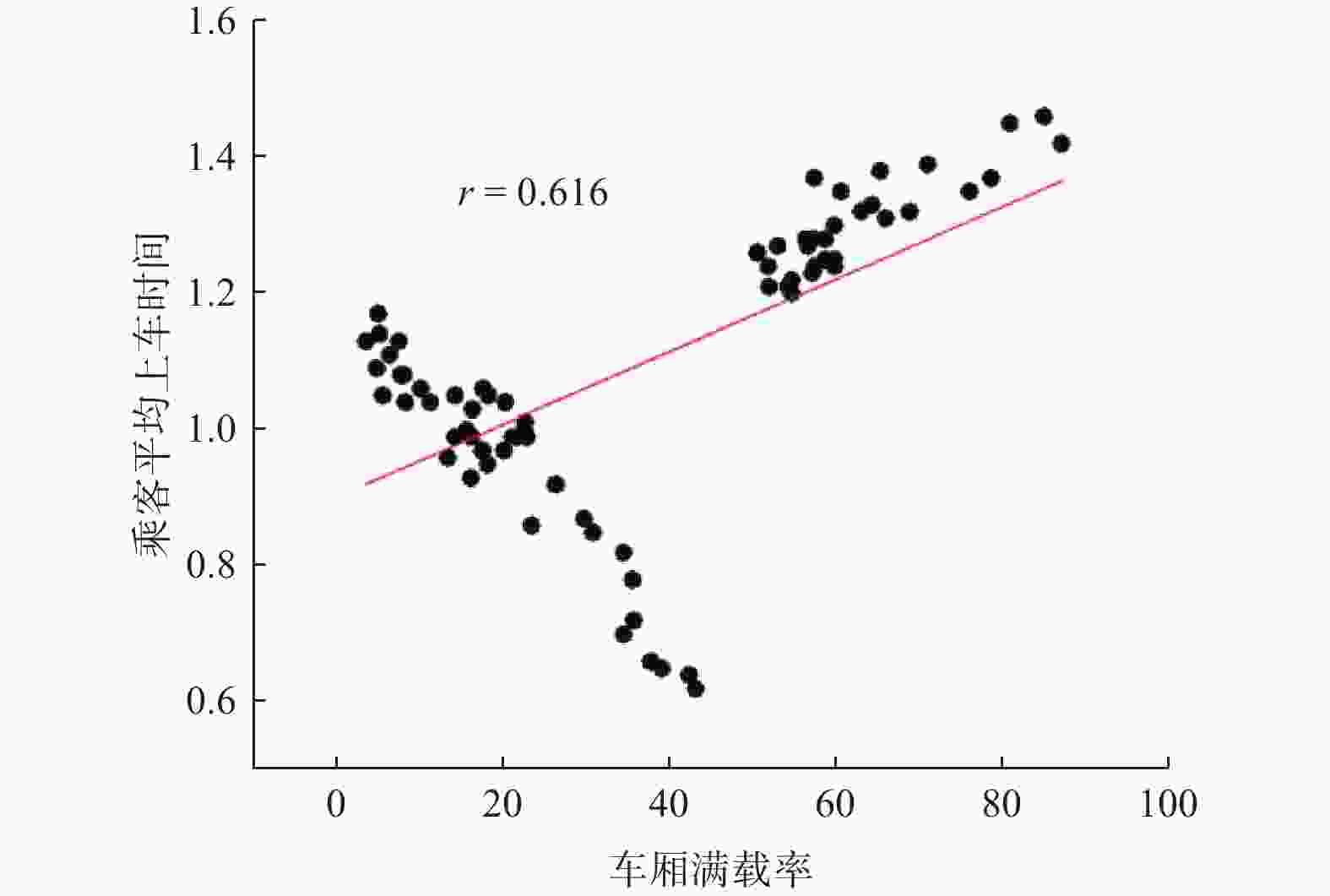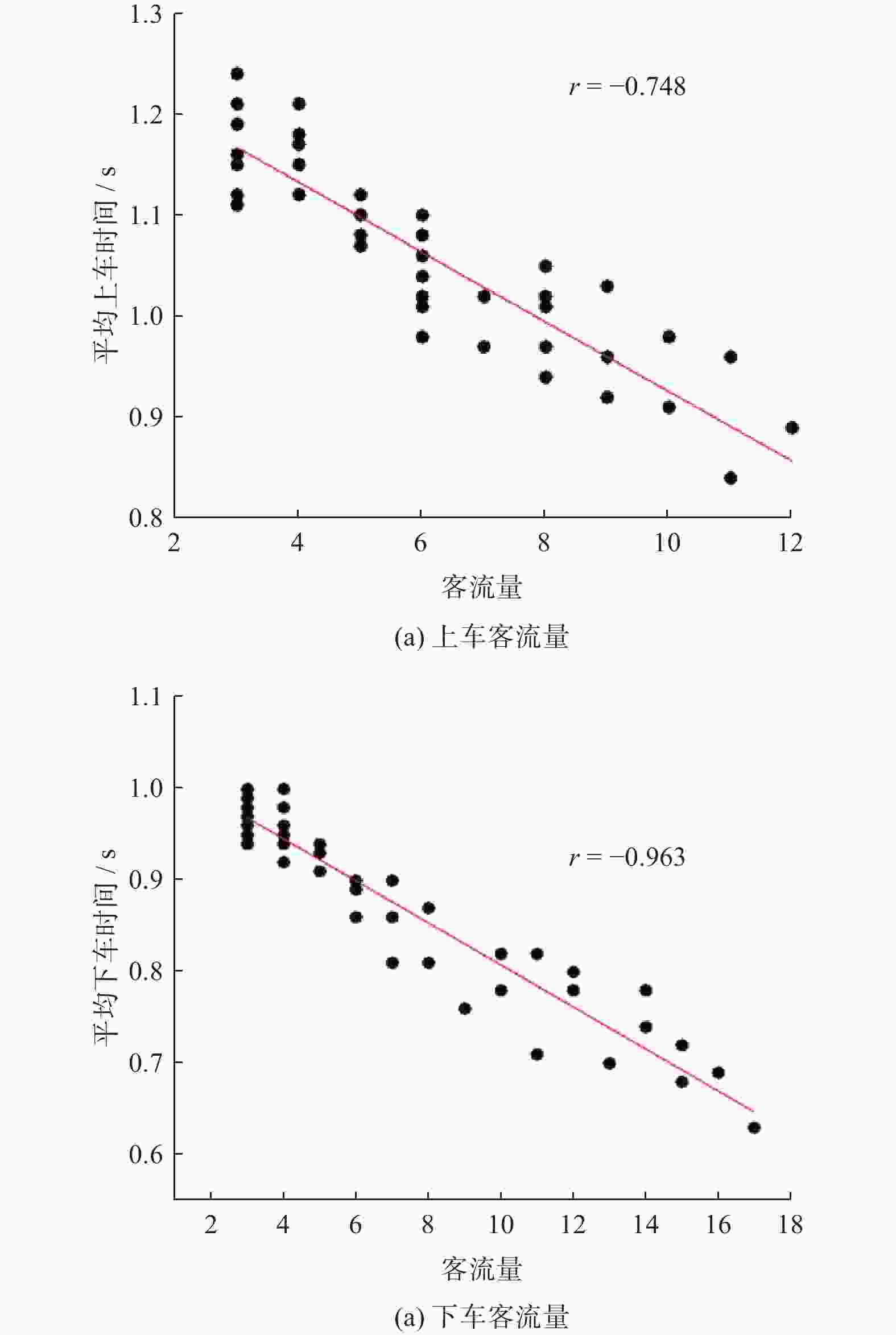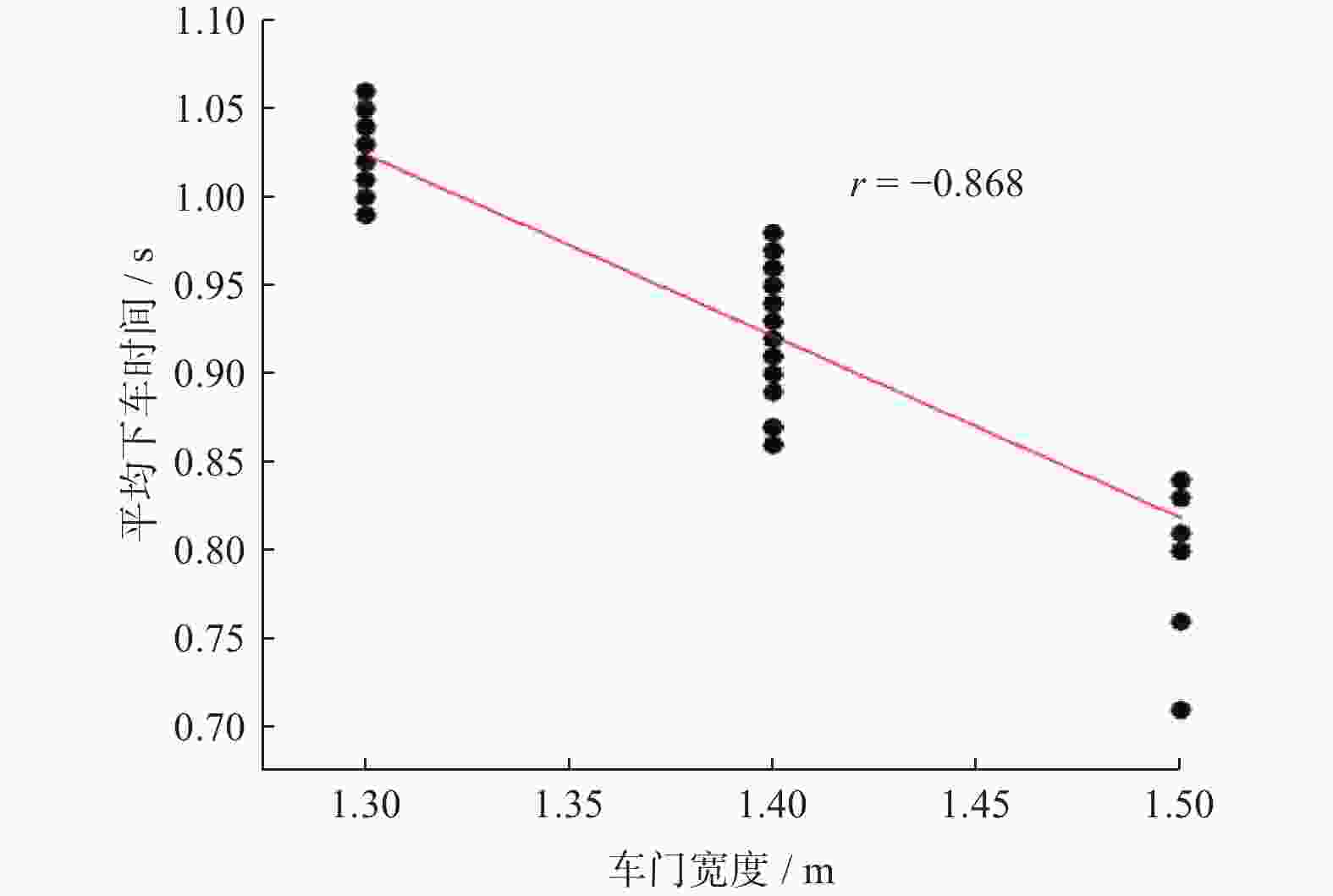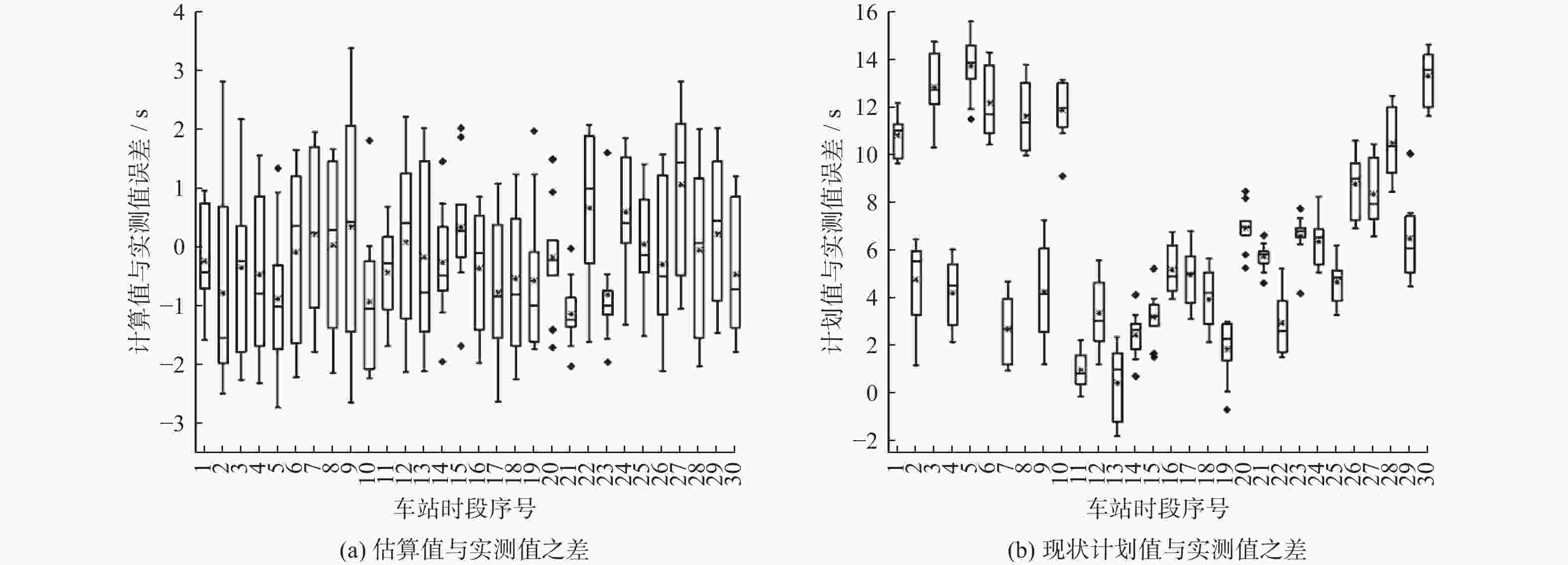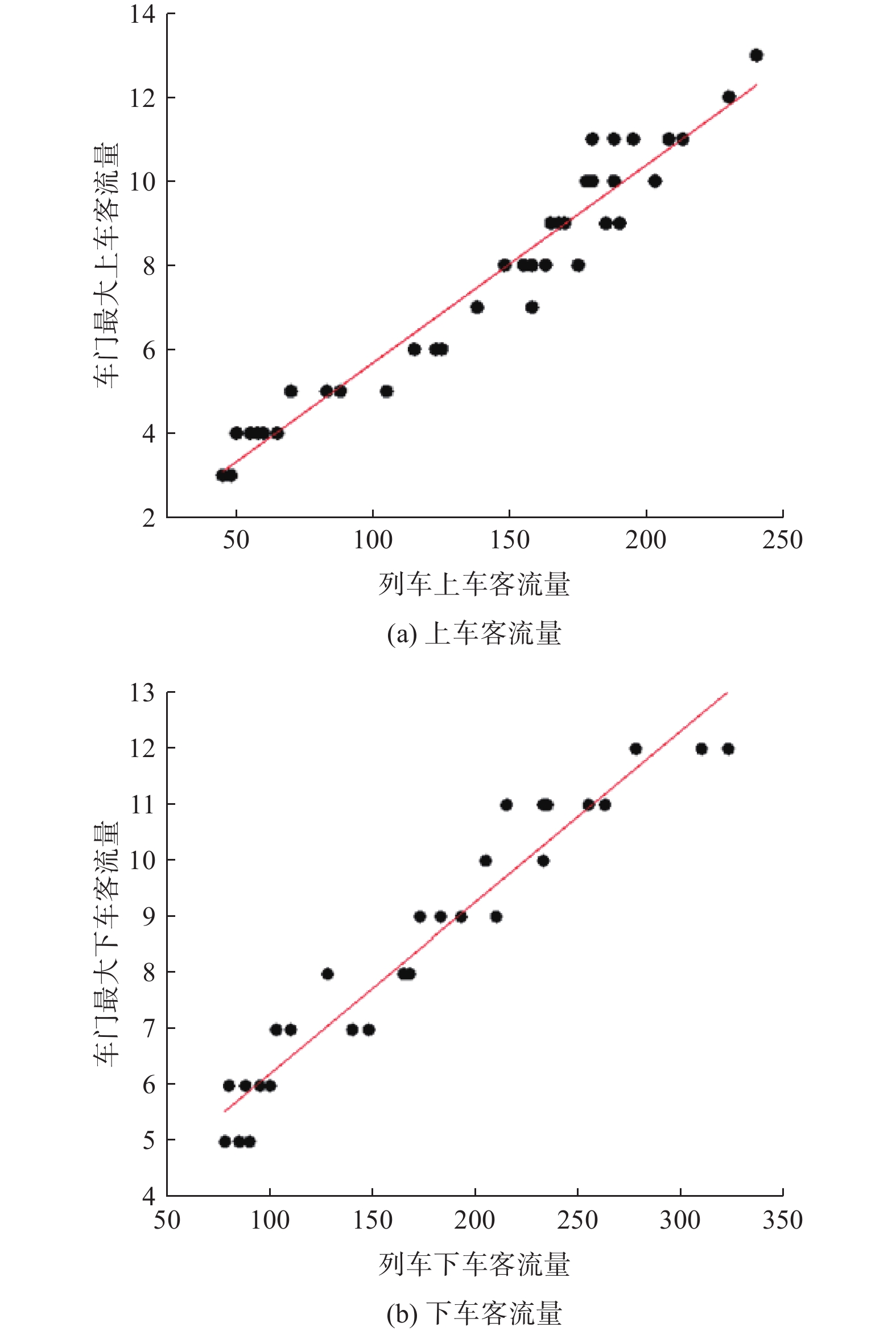Estimation method of train boarding and alighting time in urban rail transit station
-
摘要: 乘客乘降时间是城市轨道交通列车停站时间和运行图的重要组成部分,是影响轨道交通线路运行效率和运营安全的关键环节之一。将乘客乘降过程划分为上车及下车两个独立过程,基于调查数据,分析车门最大上下车客流量及平均上下车时间的影响因素,建立车门最大上下车客流量及乘客平均上下车时间估计子模型,在此基础上构建轨道交通车站列车乘降时间估计模型。以上海轨道交通车站为例,研究表明乘降时间实测值与模型估计值的偏差在11.89%以内,验证了模型的有效性和实用性。研究结果对提高轨道交通列车实际与计划乘降时间的匹配度,提升列车停站效率和保障乘客乘降安全等有重要实践价值。Abstract: Passenger boarding and alighting time is an important part of the dwelling time and operation diagram of urban rail transit trains, and is also a vital link that affect the operation efficiency and safety of rail transit lines. In this paper, the passenger boarding and alighting process was divided into two independent processes. Based on survey data, the influencing factors of the maximum passenger flow and the average boarding and alighting time were analyzed. Additionally, estimation submodel of the maximum passenger flow and the average boarding and alighting time of passengers were established. On this basis, the estimation model of train boarding and alighting time for rail transit stations was constructed. Taking Shanghai rail transit station as an example, the analysis showed that the deviation between the measured values of boarding and alighting time and the estimated value of the model is within 11.89%, which verified the effectiveness and practicability of the model. The research results have important practical value for improving the matching degree between the actual and planned boarding and alighting time of rail transit trains, enhancing train stopping efficiency, and ensuring passenger boarding and alighting safety.
-
Key words:
- urban rail transit /
- station /
- boarding and alighting time /
- estimation method
-
表 1 楼扶梯布局模式与车门最大上下车客流量相关性分析
Table 1. Correlation analysis of escalator layout mode and the maximum passenger flow of door
表征指标 最大上车客流量 最大下车客流量 楼扶梯布局类型 −0.213 −0.223 楼扶梯组数 0.124 0.233 楼扶梯总个数 0.285 0.291 下行扶梯个数 0.602** 0.783** 注:**为在0.01水平(双侧)显著相关。 表 2 车站运营时段划分及相关数据
Table 2. Division of station operation period and related data
车站名称 运营时段 下行扶
梯数${x_1}$列车编组数${x_2}$ 整列车上车
参考客流量$b_{85}^{(j)}$车厢满载率
$\varepsilon $/%整列车下车
参考客流量$a_{85}^{(j)}$车门宽度w
/m上海南站
(3号线)5:20—7:20 2 6 71 4.84 15 1.4 7:20—9:20 2 6 243 17.48 41 1.4 9:20—17:00 2 6 20 3.05 51 1.4 17:00—19:00 2 6 27 9.63 177 1.4 19:00—23:52 2 6 13 1.38 49 1.4 宜山路
(3号线)5:30—7:40 3 6 5 10.27 14 1.4 7:40—10:30 3 6 8 42.04 78 1.4 10:30—17:10 3 6 16 5.57 7 1.4 17:10—19:40 3 6 53 17.42 16 1.4 19:40—23:43 3 6 6 11.23 15 1.4 莲花路
(1号线)5:34—6:40 2 8 68 27.69 20 1.3 6:40—10:20 2 8 275 50.37 107 1.3 10:20—15:30 2 8 58 10.86 52 1.3 15:30—20:00 2 8 90 13.97 220 1.3 20:00—23:30 2 8 35 5.81 92 1.3 衡山路
(1号线)5:27—7:00 4 8 8 5.99 23 1.3 7:00—9:20 4 8 22 53.71 80 1.3 9:20—16:30 4 8 14 13.20 22 1.3 16:30—19:20 4 8 67 20.11 27 1.3 19:20—23:14 4 8 15 6.98 11 1.3 春申路
(5号线)5:52—7:00 2 4 35 4.32 22 1.3 7:00—9:00 2 4 74 19.21 30 1.3 9:00—17:10 2 4 16 16.38 8 1.3 17:10—19:30 2 4 20 31.41 45 1.3 19:30—22:42 2 4 5 23.89 21 1.3 东川路
(5号线)5:55—6:50 3 4 32 5.20 5 1.3 6:50—9:00 3 4 78 7.36 25 1.3 9:00—17:10 3 4 12 14.39 15 1.3 17:10—19:40 3 4 19 26.90 58 1.3 19:40—22:56 3 4 8 17.02 21 1.3 -
[1] JIANG Z B, XIE C, JI T T, et al. Dwell time modelling and optimized simulations for crowded rail transit lines based on train capacity[J] . Promet-Traffic & Transportation,2015,27(2):125 − 135. doi: 10.7307/ptt.v27i2.1487 [2] 张碧纯, 卢弋. 城市轨道交通停站时间建模研究[J] . 交通与运输(学术版),2011(2):48 − 52. [3] 张鹏, 张国武. 城市轨道交通乘客下车时间特性分析与建模[J] . 城市轨道交通研究,2011,14(11):80 − 82. [4] 曹守华, 袁振洲, 赵丹. 城市轨道交通乘客上车时间特性分析及建模[J] . 铁道学报,2009,31(3):89 − 93. [5] 晏莉颖, 孟祥佩. 宁波城市轨道交通乘客上下车时间特性分析与建模[J] . 铁道运输与经济,2016,38(4):94 − 98. [6] 苗沁, 潘琢. 城市轨道交通列车停站时间研究[J] . 城市轨道交通研究,2017,20(6):37 − 40. [7] 李龙, 马磊, 贺建峰, 等. 基于特征向量的最小二乘支持向量机PM2.5浓度预测模型[J] . 计算机应用,2014,34(8):2212 − 2216. [8] 肖飒, 蒲琪. 城市轨道交通站台客流聚集模型研究[J] . 城市轨道交通研究,2022,25(6):118 − 123. [9] 苏月同, 徐天捷, 蒲一超, 等. 基于有序样本聚类的城市轨道交通站点差异化高峰时段识别方法[J] . 交通运输工程与信息学报,2023,21(2):123 − 140. [10] 李思杰, 徐瑞华, 江志彬. 城市轨道交通列车运行图能力与客流需求匹配度的评价方法[J] . 中国铁道科学,2017,38(3):137 − 144. [11] 陈伽申, 蒲琪, 涂颖菲. 城市轨道交通乘客上下车行为与停站时间研究[J] . 城市轨道交通研究,2017,20(1):61 − 64, 78. [12] SERIANI S, FUJIYAMA T, HOLLOWAY. Exploring the pedestrian level of interaction on platform conflict areas at metro stations by real-scale laboratory experiments[J] . Transportation Planning and Technology,2017,40(1):100 − 118. doi: 10.1080/03081060.2016.1238574 [13] 谢英豪, 江志彬, 徐瑞华. 城市轨道交通断面客流数据可视化分析及优化[J] . 城市轨道交通研究,2017,20(1):69 − 74. -




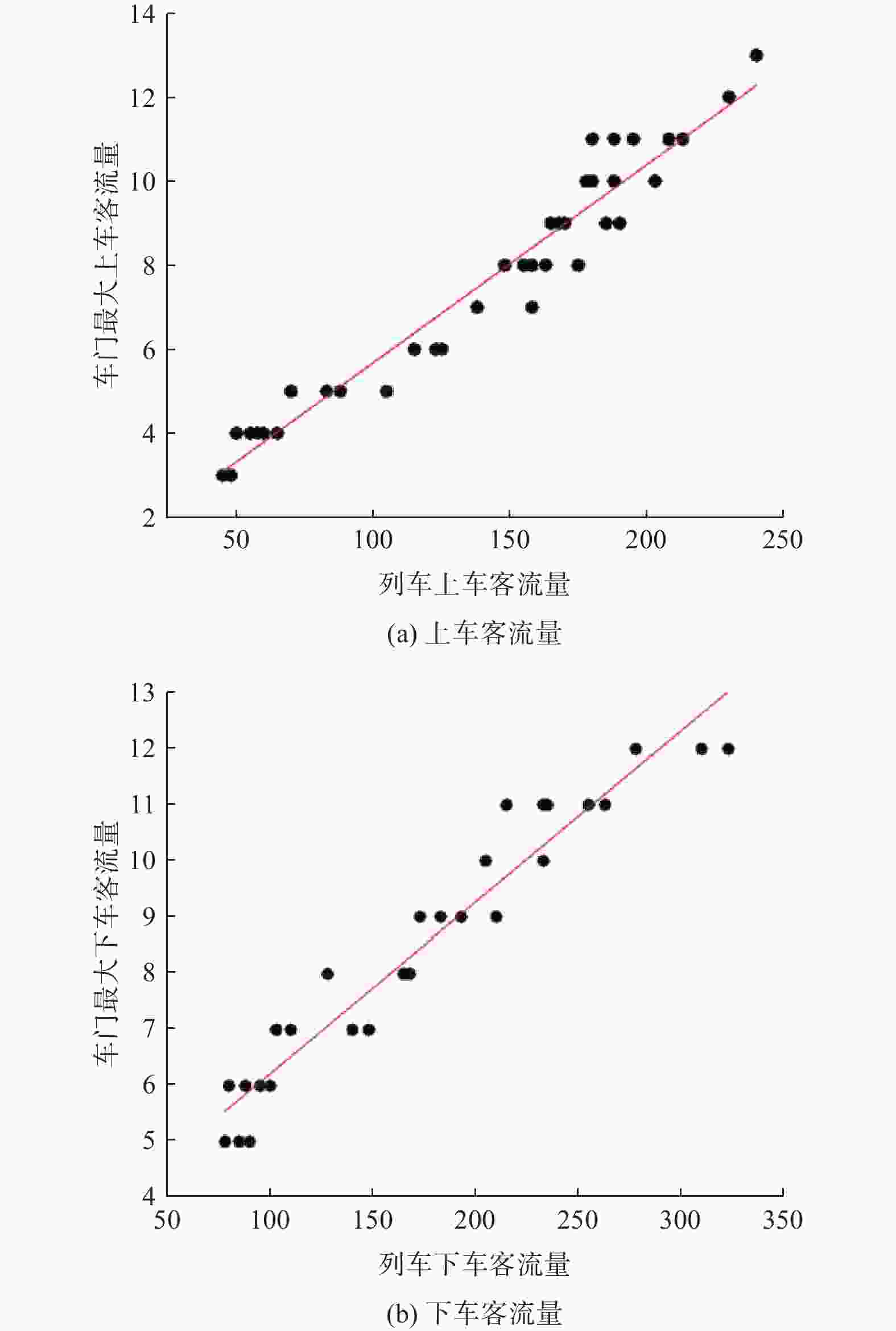
 下载:
下载:
